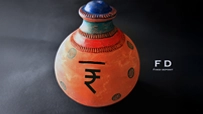How to Monitor and Adjust Your Recurring Deposit to Meet Changing Financial Needs
December 09, 2024

Saving money is essential for building wealth and achieving financial goals. One effective way to save is through a Recurring Deposit (RD) account. RDs offer a disciplined approach to saving, higher interest rates than regular savings accounts, flexible tenures ranging from 6 months to 10 years, and guaranteed returns.
In this blog post, we will explore how you can monitor and adjust your recurring deposit to meet your changing financial needs.
How to Monitor Your Recurring Deposit
Monitoring your recurring deposit is crucial to ensure that you stay on track with your savings goals and make any necessary adjustments along the way. Here are some key steps to effectively monitor your RD:
- Track Monthly Deposits: Keep a record of each monthly deposit you make into your recurring deposit account. This will help you stay organised and track your progress.
- Monitor Interest Rates: Stay updated with the interest rates on your recurring deposit account. Interest rates may change over time, so it's important to review them periodically and understand how they impact your savings.
- Calculate Your Returns: Regularly calculate the returns you are earning on your recurring deposit. Use the formula for compound interest to determine the total amount you will receive at the end of the tenure.
- Review Tenure and Adjustments: Assess whether the tenure of your recurring deposit is aligned with your financial goals. If necessary, make adjustments to the tenure to ensure that you can meet your goals within a suitable time frame.
- Track Changes in Financial Situation: Monitor any changes in your financial situation and adjust your monthly deposits accordingly. If you have additional funds available or need to reduce your savings temporarily, make appropriate changes to maintain financial stability.
You can do all this and more with Ujjivan SFB’s mobile banking app or via Internet Banking.
Adjusting Your Recurring Deposit
Flexibility is one of the key benefits of recurring deposits. Here are some ways to adjust your RD as per your requirements:
- Changing Monthly Deposits: If you find that you can save more or less than originally planned, consider adjusting your monthly deposits accordingly. Increasing or decreasing the amount can help you align your savings with changing financial goals and priorities. Please note that most banks don’t allow tweaking the investment amount once you have opened the account. You may need to close your existing RD and open a new account.
- Renewing and Extending Tenure: At the end of a recurring deposit tenure, you have the option to renew and extend the tenure. Evaluate your financial goals and decide whether you need to continue saving for a longer period or if it's time to use the accumulated funds.
- Switching to Fixed Deposits: As your financial situation evolves, you may consider converting your recurring deposit into a fixed deposit. Fixed deposits offer higher interest rates and can provide better returns over a longer tenure.
Final Thoughts
Monitoring and adjusting your recurring deposit is essential to ensure financial flexibility. By tracking monthly deposits, monitoring interest rates, calculating returns, reviewing tenure, and making necessary adjustments, you can stay on top of your savings goals.
Start small, dream big! Invest in Ujjivan Small Finance Bank’s Recurring Deposit and enjoy higher interest rates! Save for your long- and short-term goals with our RD and live a stress-free financial life. Start investing with just ₹100!
Disclaimer:
The contents herein are only for informational purposes and generic in nature. The content does not amount to an offer, invitation or solicitation of any kind to buy or sell, and are not intended to create any legal rights or obligations. This information is subject to updation, completion, amendment and verification without notice. The contents herein are also subject to other product-specific terms and conditions, as well as any applicable third-party terms and conditions, for which Ujjivan Small Finance Bank assumes no responsibility or liability.
Nothing contained herein is intended to constitute financial, investment, legal, tax, or any other professional advice or opinion. Please obtain professional advice before making investment or any other decisions. Any investment decisions that may be made by the you shall be at your own sole discretion, independent analysis and evaluation of the risks involved. The use of any information set out in this document is entirely at the user’s own risk. Ujjivan Small Finance Bank Limited makes no representation or warranty, express or implied, as to the accuracy and completeness for any information herein. The Bank disclaims any and all liability for any loss or damage (direct, indirect, consequential, or otherwise) incurred by you due to use of or due to investment, product application decisions made by you on the basis of the contents herein. While the information is prepared in good faith from sources deemed reliable (including public sources), the Bank disclaims any liability with respect to accuracy of information or any error or omission or any loss or damage incurred by anyone in reliance on the contents herein, in any manner whatsoever.
To know more about Ujjivan Small Finance Bank Products Visit:"https://www.ujjivansfb.in"
All intellectual property rights, including copyrights, trademarks, and other proprietary rights, pertaining to the content and materials displayed herein, belong
to Ujjivan Small Finance Bank Limited or its licensors. Unauthorised use or misuse of any intellectual property, or other content displayed herein is strictly prohibited and the same is not intended for distribution to, or use by, any person in any jurisdiction where such distribution or use would (by reason of that person’s nationality, residence or otherwise) be contrary to law or registration or would subject Ujjivan Small Finance Bank Limited or its affiliates to any licensing or registration requirements.
FAQs
1. Can I convert my recurring deposit into a fixed deposit?
In some cases, you may have the option to convert your RD into a fixed deposit. Consult your bank for more information.
2. What happens if I close my recurring deposit before the end of the tenure?
If you close your RD account before the end of the tenure, you may lose out on potential interest earnings. Also, closing an RD before 6 months would attract penalties. Generally, 1% penalty is applicable for premature withdrawals made before 6 months from the time of deposit.
3. Can I take a loan against my recurring deposit?
Some banks offer the facility of taking loans against recurring deposits. This can be a useful option if you need immediate funds without breaking your RD.
4. Are recurring deposits taxable?
Yes, the interest earned on recurring deposits is taxable as per income tax regulations. TDS of 10% is applicable if the interest income exceeds ₹40,000 (₹50,000 for senior citizens) in a financial year.
5. What documents do I need to open a recurring deposit account?
Generally, if you’re planning to open an RD with the same bank where you already have a savings account, you may not have to submit any KYC documents. However, if your savings account is with another bank, you would need to provide additional KYC documents like PAN and Aadhar.
6. How frequently should I monitor my recurring deposit?
It is recommended to monitor your RD periodically, at least once every quarter, to ensure that it aligns with your financial goals and stays on track.
7. What happens at the end of my recurring deposit tenure?
You have the option to renew and extend the tenure or use the accumulated funds as per your financial needs.
8. Are recurring deposits better than fixed deposits?
Recurring deposits are for systematic savings, helping you achieve your short-terms goals or build an emergency fund. Fixed Deposits offer long-term wealth growth and work as a safety net against market volatility. Having both in your portfolio is recommended.
9. Can I open a recurring deposit online?
Yes, many banks offer the option to open a recurring deposit account online for convenience.
Latest Blogs

ITR-1 (Sahaj) Restrictions: Income Sources Not Allowed & Filing Rules
With just a few days left before the 15 September 2025 deadline for filing Income Tax Returns (ITRs) for Assessment Year (AY) 2025-26, many taxpayers are rushing to submit their forms online.

GST Rate Cut on Electronics: What It Means for Consumers and Retailers
India’s Goods and Services Tax (GST) system has entered a new era with the rollout of GST 2.0, effective from September 22, 2025.

Banking Safety Guide: How to Avoid QR Code Frauds While Making Payments
India’s love for QR code payments has made transactions lightning-fast, but also opened a new front for cybercriminals.

Scam Alert! Phishing, Vishing, and Smishing Can Drain Out Your Finances
Digital banking in India has transformed the way we manage money.

India’s New GST Reform Bill: What GST 2.0 Means for You
India’s indirect tax system is entering a landmark new phase.





